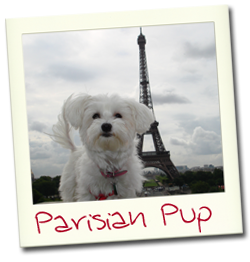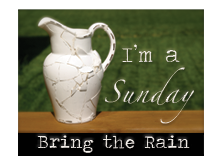My Grandfather was in WWII and stationed in Normandy 9 days after D-Day (D-Day + 9 is how they officially refer to it). It is emotional for me to imagine him being here and the possibility that he could have been killed. I am sure this is the feeling every person must feel when a family member or friend is in the military and in harms way. I do not remember many stories he would tell but we do have some of the items and pictures he brought back with him from his time in France. They are treasures that we will never part with.
Our first stop was at Gold Beach, which was a British invasion point. Not only is this one of the places where they landed this is also where the British built their temporary harbor and port in order to deliver supplies before they were able to take control of an existing one. I have never heard of these temporary harbors and their importance. These harbors apparently played a huge part of why we won the war. These harbors were built in England and towed to the beaches through the English Channel. Can you believe this? The Americans built one as well to be placed at Utah Beach but it did not withstand the horrible weather on the day they were trying to build it at the beach. How could this have been left out of every history class I took?!
Me at Gold Beach:
.jpg)
.jpg) After Gold Beach, we visited a great military museum in the port of Arromanches. You can see the pictures on the Shutterfly album.
After Gold Beach, we visited a great military museum in the port of Arromanches. You can see the pictures on the Shutterfly album.
We also went to Utah Beach, which along with Omaha Beach was one of the American invasion points. The best part of this beach was the kilometer marker zero. Every kilometer from that point on until Belgium there is another marker to show the path of the Allied Forces..jpg)
.jpg)
We also visited Pointe du Hoc (close to Utah Beach). It is a clifftop location standing 100 feet above the water. It was a point of attack by the US Army during the Battle of Normandy in WWII. The Germans built this location to house a battery of captured French 155mm guns. The unbelievable part was that they did not fill in the craters from the bombs and you can see just how deep they were. Also, there were old bunkers you could go into and see. After the invasion, 90km of these craters along the coast were left!!
A little glimpse of the craters:
.jpg) Pointe du Hoc cliffs:
Pointe du Hoc cliffs:.jpg)
We ate lunch in Sainte-Mere-Eglise. It was where a paratrooper by the name of John Steele got stuck on the top of the church and acted dead for (I think) 2 days until he could be cut down. Also in this town was the Airborne Museum, which was awesome and my favorite of all the museums we visited. Again, pics can be found in my Shutterfly album! The best part for me was seeing all of the items used during the war (first aid kits, morphine shots, food, etc). I even found a French phrase book, which is just like the one my Grandfather used, and we still possess. Isn’t that cool??!!
.jpg) Paratrooper, John Steele:
Paratrooper, John Steele:.jpg) A visit to a German cemetery, La Cambe, was also on the day's itinerary. The German war dead from the Normandy campaign were scattered over a wide area, many of them buried in isolated or field graves - or small battlefield cemeteries. In the years following WWII, the German War Graves Commission decided to establish six main German cemeteries in the Normandy area, with the one at La Cambe started in 1954. During this period the remains of more than 12,000 German soldiers were moved in from 1,400 locations. The cemetery was finished in 1961. In total there are 21,222 German soldiers commemorated here, of which 207 unknown and 89 identified are buried in a kamaradengraben (or mass grave) below the central tumulus.
A visit to a German cemetery, La Cambe, was also on the day's itinerary. The German war dead from the Normandy campaign were scattered over a wide area, many of them buried in isolated or field graves - or small battlefield cemeteries. In the years following WWII, the German War Graves Commission decided to establish six main German cemeteries in the Normandy area, with the one at La Cambe started in 1954. During this period the remains of more than 12,000 German soldiers were moved in from 1,400 locations. The cemetery was finished in 1961. In total there are 21,222 German soldiers commemorated here, of which 207 unknown and 89 identified are buried in a kamaradengraben (or mass grave) below the central tumulus..jpg)
.jpg)
We finally made it to the American Cemetery and Omaha Beach. The land was given to the United States by France and is truly American soil. The American Cemetery is on top of the cliffs at Omaha Beach and is clearly emotional. The sheer number of graves just astounds you. The land and cemetery are pristine and extremely well taken care of. It is beautiful and calm. If you ever take your life for granted go visit this cemetery.
The cemetery covers 172 acres and contains the remains of 9,387 American military dead, most of whom were killed during the invasion of Normandy and ensuing military operations in WWII. The graves face westward, towards the United States. Also, the names of 1,557 Americans who lost their lives in the conflict but could not be located and/or identified are inscribed on the walls of a semicircular garden at the east side of the memorial. The memorial consists of a semicircular colonnade with a loggia at each end containing maps and narratives of the military operations. At the center is a bronze statue entitled Spirit of American Youth. Facing west at the memorial, one sees in the foreground the reflecting pool, the mall with burial areas to either side and the circular chapel beyond. Behind the chapel are statues representing the United States and France.
American Cemetery:
.jpg)
.jpg)
.jpg) Omaha Beach:
Omaha Beach:.jpg)
.jpg) The whole day was draining and emotional, but overall, I am so blessed to have this opportunity to see and experience it all.
The whole day was draining and emotional, but overall, I am so blessed to have this opportunity to see and experience it all.











No comments:
Post a Comment